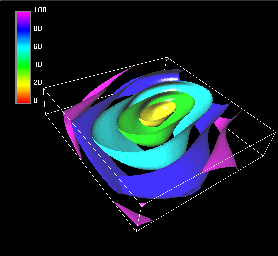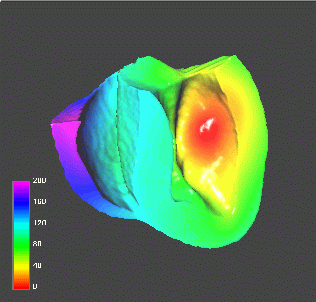

Abstract:
The numerical simulation of action potential propagation in three- dimensional ventricular tissue is severely restricted by the fact that the action potential is sharp, requiring a fine spatial and temporal resolution. To overcome this restriction, we present a different view of propagation that tracks the location of the action potential upstroke without tracking the fine details of the upstroke dynamics, thereby permitting simulation of the activation sequence on much larger spatial domains. This model is fully physiological, as all parameters of the model are directly measurable.
To demonstrate the utility of this approach, the results of two model studies are presented. In the first, we study the effects of anisotropy and fiber rotation on the activation sequence in a large three- dimensional slab of tissue. In the second, we examine the effects of geometry, fiber orientation and anisotropy on the intact ventricles. For this intact heart simulation we use recent geometry and fiber orientation data from laboratory of P. Hunter.


For higher resolution images click: Box
To see all the figures from this paper, click on here